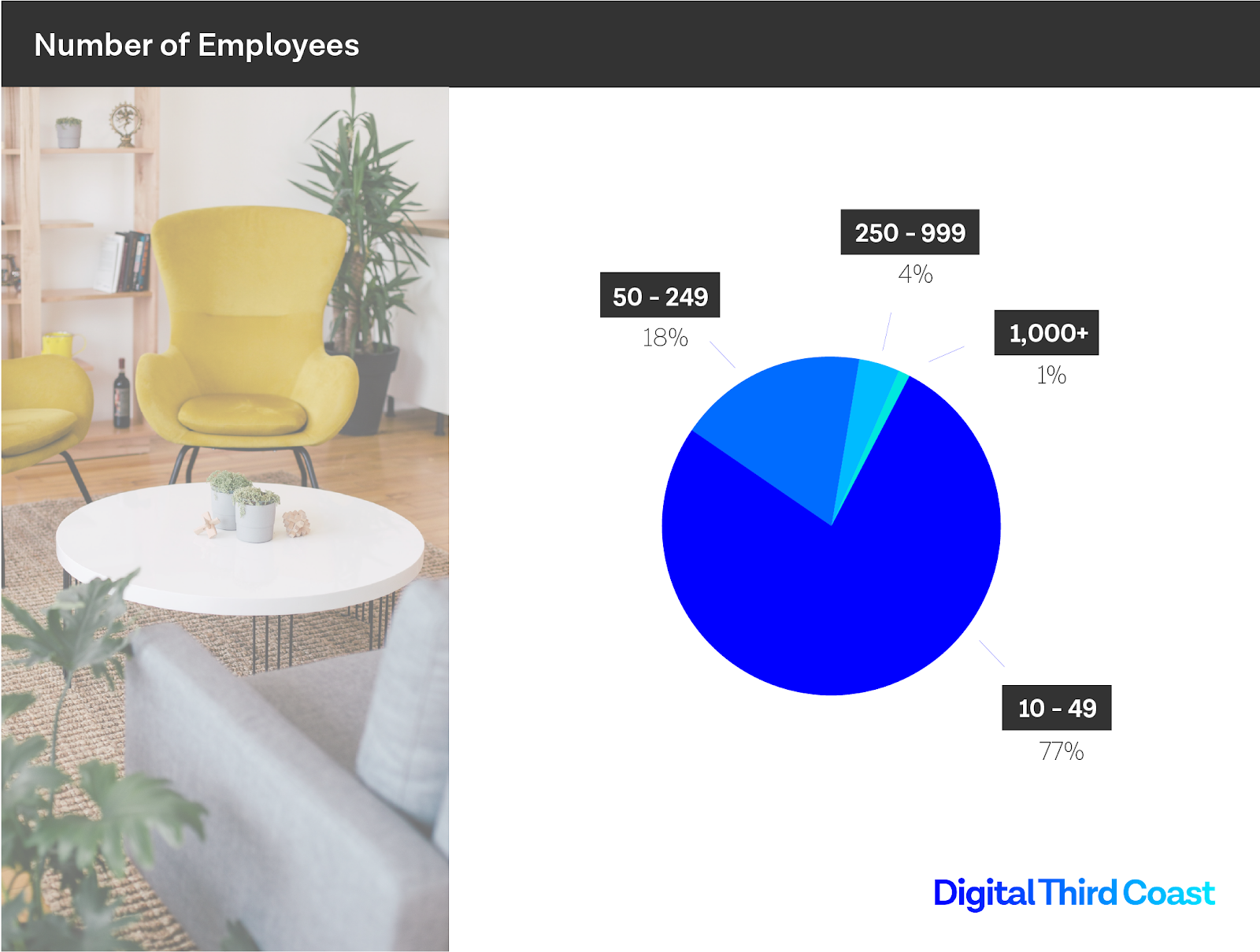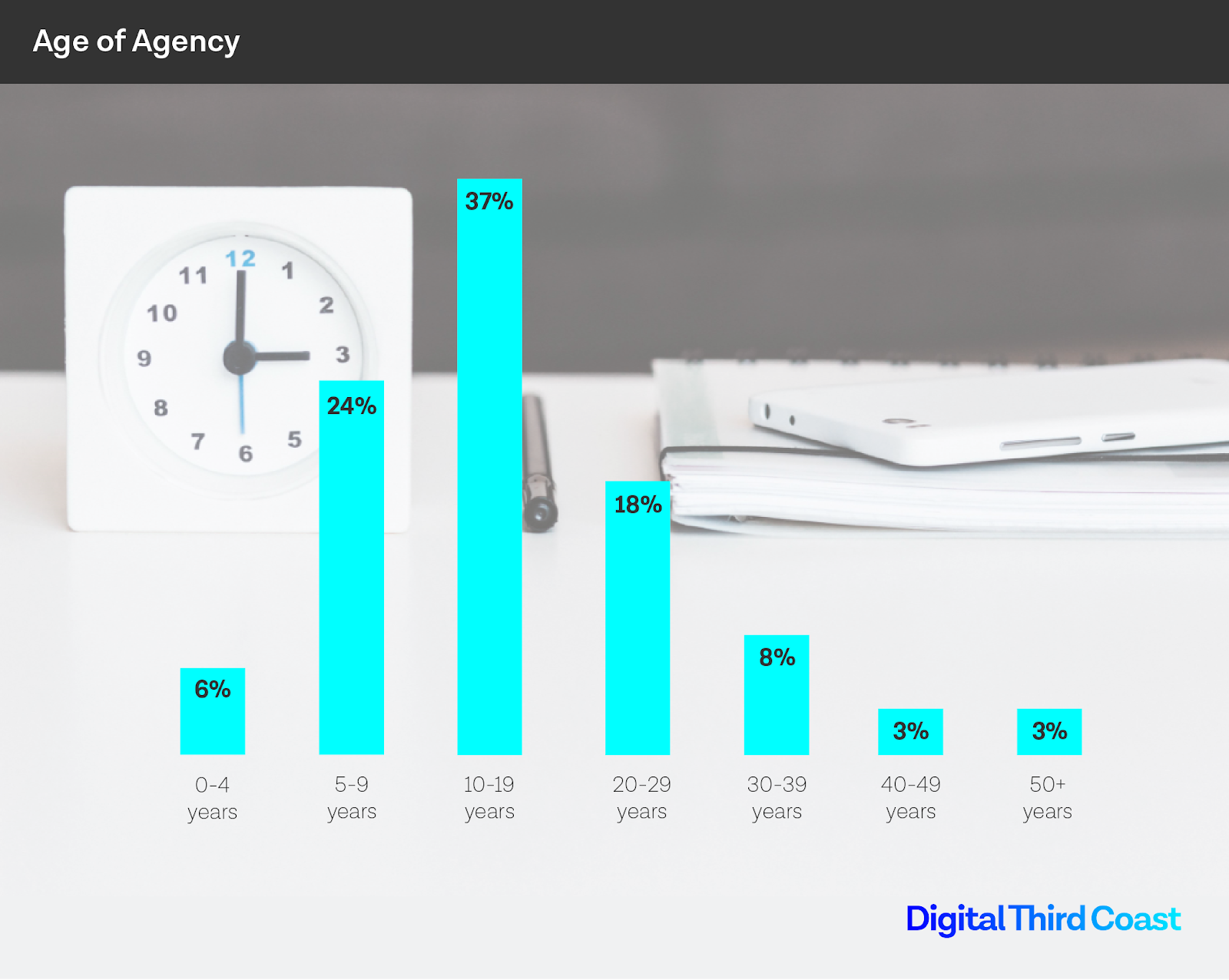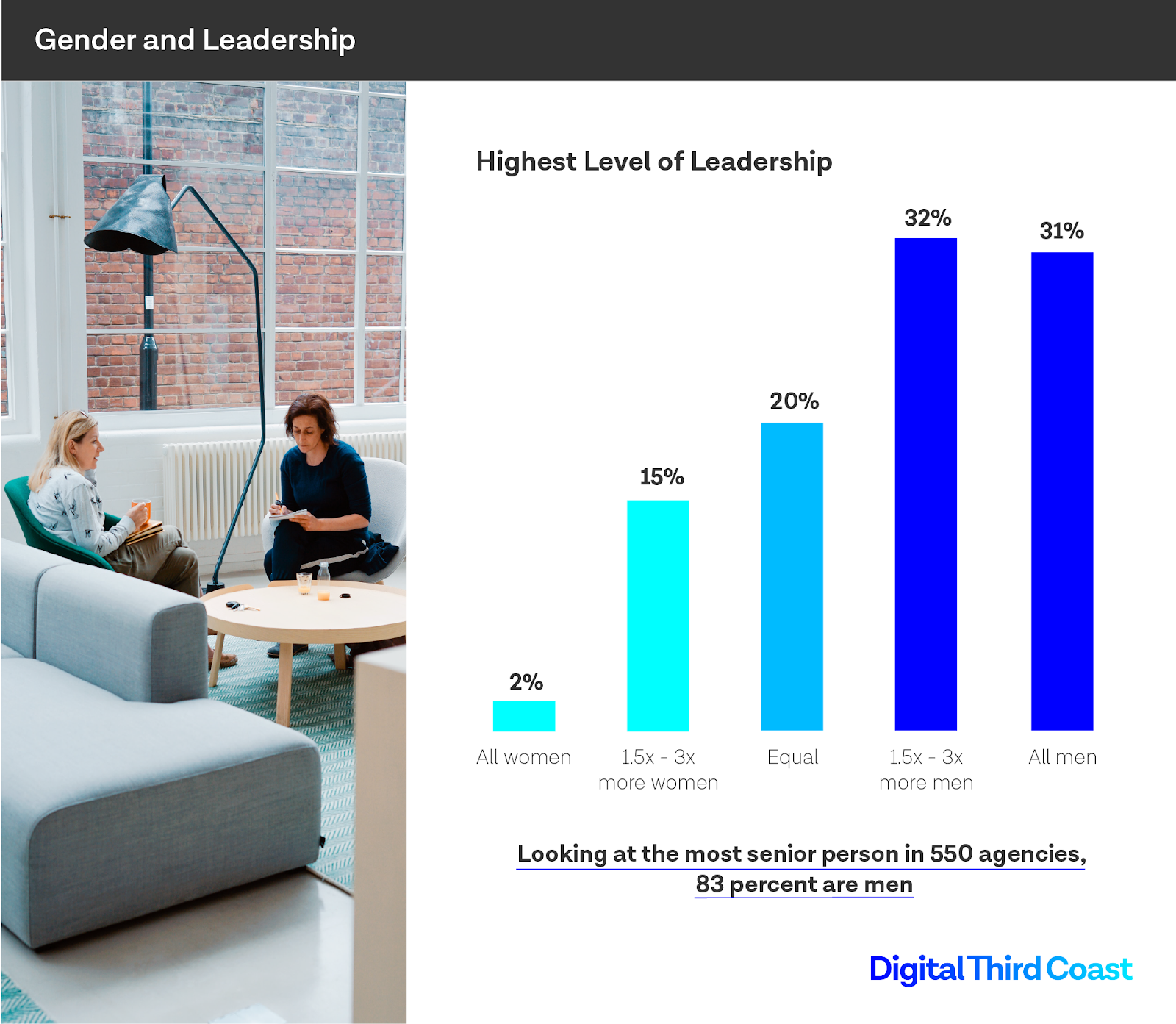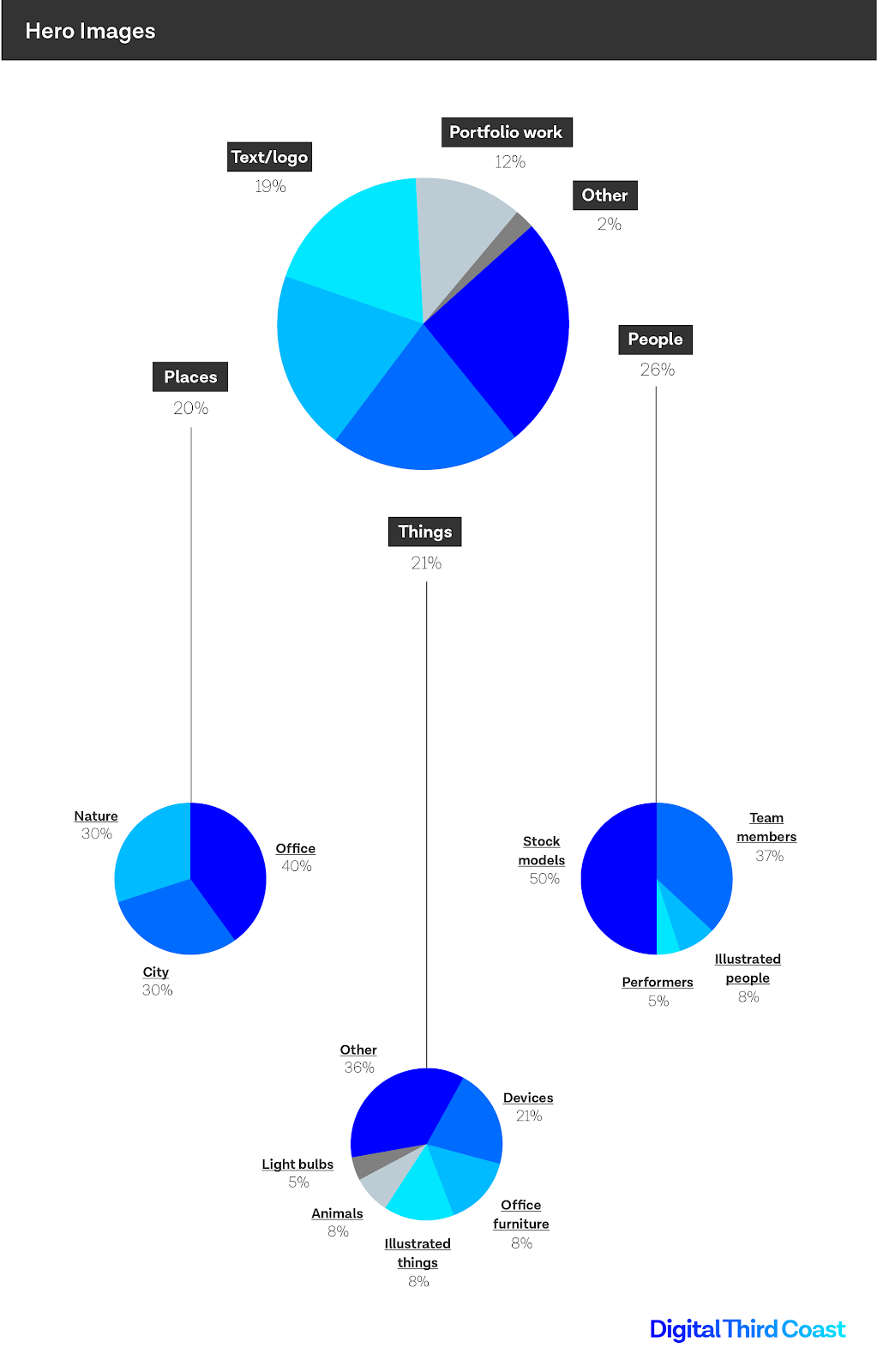- Like
- SHARE
- Digg
- Del
- Tumblr
- VKontakte
- Flattr
- Buffer
- Love This
- Save
- Odnoklassniki
- Meneame
- Blogger
- Amazon
- Yahoo Mail
- Gmail
- AOL
- Newsvine
- HackerNews
- Evernote
- MySpace
- Mail.ru
- Viadeo
- Line
- Comments
- Yummly
- SMS
- Viber
- Telegram
- JOIN
- Skype
- Facebook Messenger
- Kakao
- LiveJournal
- Yammer
- Edgar
- Fintel
- Mix
- Instapaper
- Copy Link
It’s a defining human impulse — the desire to quantify the world around us. And given the pending 2020 U.S. Census, it seems a fitting time to contribute.
Recently, my team did just that: Like our astronomic ancestors under ancient skies, we looked outward and began to count.
What did we count?
Every marketing agency in America. Sort of.
Truth be told, it would be foolish to declare an exact tally. Our source was online listings, so there’s plenty of margin for error. Some agencies get gobbled up by competitors two weeks after you count them. Others shutter in the real world but endure online. And some never existed; they were always empty shells, built by hustlers with an UpWork account, pronouncing their “team” ready for your next big project.
What I can say is this: America is home to at least several thousand marketing agencies. We trawled 6,000 listings, and analyzed 600 websites and LinkedIn company profiles, to cover as many disciplines as possible. Those include:
- Advertising
- Branding
- Content Marketing
- Design
- PR
- SEO/SEM
- Social Media
- Web Design
- Web and App Development
We gathered a number of measurements, too, including:
- Agency size
- Agency age
- Agencies per capita
- Top disciplines
- Hourly rates
- Gender distribution in leadership
- Homepage hero images
- Company names
- Company taglines
You’re encouraged to read the full report.
Below, I’ll share our four key takeaways from the state of marketing agencies in America in 2020. I encourage leaders and contributors alike: sit back, take a breath, and think big thoughts about your trajectory in the agency universe.
1. Preserve What’s Special as You Grow
Our analysis found 77% of agencies have 10 to 49 employees, and 18% of agencies have 50 to 249 employees.
I wonder how many in the smaller range wish they could get to the next level, and how many big agencies long to be small again? Like rock bands, do agencies graduate to playing arenas, only to find themselves slumped over a shrimp buffet backstage, longing for their leaner, grimier club days?
It raises the fundamental question: What do we lose as we grow?
Small agencies should anticipate the challenge and make a vocal commitment to certain values that can be threatened when scaling. Big agencies should take stock. What’s been sacrificed — agility, focus, community? Pick something that once defined you, that you want back. Make it a 2020 goal.

2. Anticipate Lifespan and Legacy
On average, a dog will live 10 to 13 years. As for a marketing agency? Not much longer.
In America, 61% of marketing agencies are between five and 19 years old, after which the population drops off significantly.
Why is that?
Think about what influences an agency’s lifespan. How much is external versus internal? Are agencies barely outliving dogs because markets and technology tend to evolve beyond their original mastery? Or because 20 years roughly aligns with the sweet spot of a human career and visionary founders struggle to make their businesses outlive them?
In either case, there’s lots to anticipate and act on at various points in the lifespan of an agency.
Be mindful of where the heart is in your agency — its center of energy. If it comes from a single charismatic founder, beware. The heartbeat of an organization should be sustained by many people.
Take an unflinching look at the evolution of markets and technology around you, since the beginning. Just because you mastered something that was new five years ago doesn’t mean you’re positioned to master what’s around the corner. A long life depends on lots of planning (and a little luck).

3. Don’t Just Hire Women — Empower Them to Lead
This topic is a monster, and certainly deserving of much more attention than I’ll give it here. But I’d like to share a candid note about how our agency was founded, and what it means for gender equality in agency leadership.
The founders of Digital Third Coast are both men. They worked together at an early iteration of a digital marketing agency, early in their careers. They left that agency and ventured out to start their own business.
For the purposes of our analysis, we classified our agency as having “all men” in leadership. In this case, the highest identifiable tier of leadership is “owner”, and there are two owners, both men.
Our owners are conscientious, fair, and progressive. They value contributions of women as much as men, they hire women regularly, and they give women opportunities to lead in our organization. But none of that changes where they started. When they were at their previous agency, they looked around and found each other, among other men.
The numbers are abysmal in the agency world, as they are in so many other sectors of business. But female leaders don’t materialize out of thin air, and we won’t reach a state of equality through promotions alone. If we flipped a switch and suddenly every marketing agency in the country with 250+ employees had all-female C-suites, these numbers would barely budge.
This is a small business problem, not a corporate problem. We need an industry, economy, and society where young women feel empowered to start their own businesses, just as our owners once did.
A challenge for agency leaders: right this minute, are there women in your organization who are working and growing with other women, in substantive ways, who may one day feel empowered to venture out on their own? There should be.

4. Make an Authentic First Impression
On a (slightly) lighter note — can we end the scourge of stock model photography? Please.
In a world defined and dominated by user-generated content and the unprecedented intimacy and access of social media, agencies should not be representing themselves with sterile stock imagery.
The homepage hero image is an enormous opportunity. Marketing agencies in America do various things with it. Most show people, objects, or places. You might see a light bulb, a group of people standing around a table, or a city skyline.
The opportunity, of course, is not just to look good, or look on-trend, but to reflect expertise, integrity, and professional values.
Agency leaders should reflect: is my homepage hero everything it can be, or is it what I’ve seen everyone else do?

Much of our daily grind is occupied by an appropriate depth of focus — we manage the work at hand, our people, our quarterly and annual goals, our company vision. Occasionally we venture beyond that and consider our competitors and our markets.
And, once in a while, we’re prompted to go a step further and consider existential questions about longevity, equality, and connection to our past. I hope this data helps you with that.
Originally published Jun 11, 2020 7:00:00 AM, updated June 11 2020
![what-i-learned-from-counting-every-marketing-agency-in-america-[4-takeways]](https://everythingflex.com/wp-content/uploads/2020/06/6152/what-i-learned-from-counting-every-marketing-agency-in-america-4-takeways.jpg-23keepProtocol)
![→ Download Now: The Illustrated Guide to Org Charts [Free Guide + Templates]](https://no-cache.hubspot.com/cta/default/53/7cbd0328-6c8c-40e0-98dd-c3b6e6be96f0.png)


